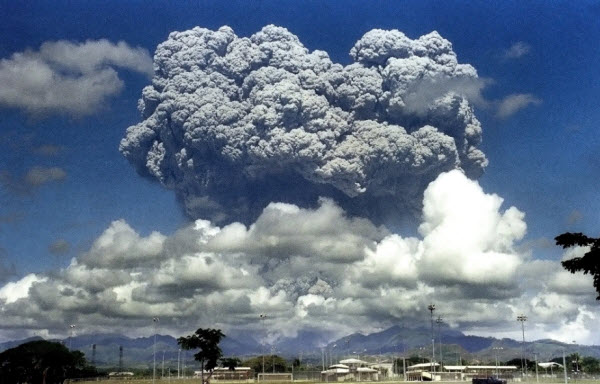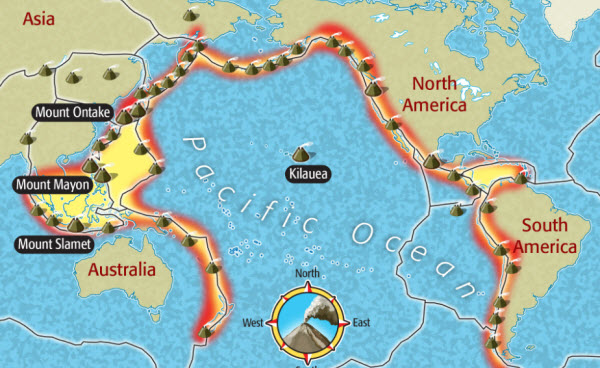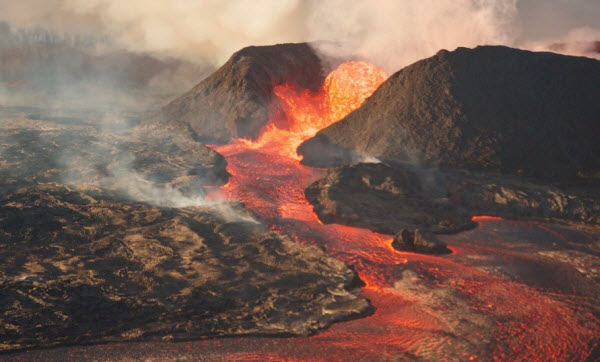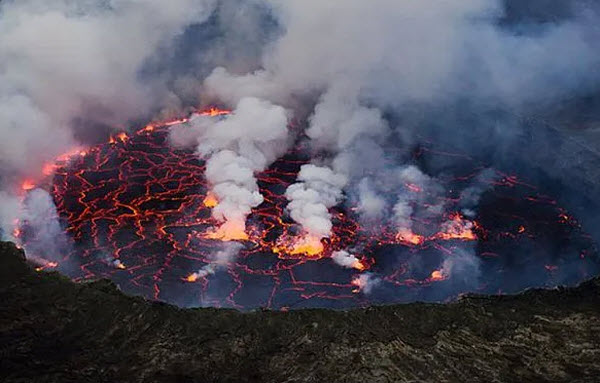Volcanoes are openings on the surface of a planet or moon that allow hotter materials from their surroundings to escape from within. They act as vents in the Earth’s crust and are responsible for much of the planet’s geological shaping. Over 80% of Earth’s surface is formed by volcanic activity, which has been crucial in shaping our world. The explosive power of volcanoes has created mountains and craters, and volcanic rocks have released nutrients that form remarkably fertile soils, allowing civilizations to thrive. Volcanoes are typically found where tectonic plates diverge or converge, and most are located underwater, but they also exist on every continent, including Antarctica. Currently, it is estimated that there are around 1,500 active volcanoes on Earth, with about 10% of them located within the boundaries of the United States. Notably, volcanoes are not exclusive to Earth; they can be found on many other planets in the solar system.
Volcanoes vary widely in their formation and eruption styles. Some form due to explosive eruptions, like the eruption of Mount Pinatubo in the Philippines in 1991, while others form from rivers of flowing lava, known as effusive eruptions, such as the activity of Kīlauea in Hawaii in 2018. These differences are largely due to the chemistry driving the molten activity. Effusive eruptions are more common when the magma, or molten rock, inside the volcano is less viscous, allowing gas to escape and lava to flow smoothly down the slopes. Explosive eruptions occur when viscous, molten rock traps gases, increasing pressure until it violently bursts. Volcanoes can be active, dormant, or extinct. Active volcanoes are those that have recently erupted or are expected to erupt in the near future, releasing molten rock (called lava on the surface and magma below ground), ash, and gas. Dormant volcanoes have not erupted in a long time but may erupt again, while extinct volcanoes are not expected to erupt again.

Magma, a molten mixture of elements like oxygen, silicon, aluminum, iron, magnesium, calcium, sodium, potassium, titanium, and manganese, forms tens of kilometers below the Earth’s surface. It is lighter than the surrounding solid rock, allowing it to rise towards the surface due to buoyancy, eventually breaking through weak spots in the Earth’s crust, leading to an eruption.

How Do Volcanoes Form?
Most volcanoes around the world form along the Earth’s tectonic plate boundaries, where vast sections of the planet’s lithosphere are constantly moving and colliding. This movement often results in one plate sinking beneath another in a process known as subduction. As the sinking landmass moves deeper into the Earth, it experiences higher temperatures and pressures, releasing water from the rocks and lowering their melting point. This process leads to the formation of magma, which can rise to the surface, rejuvenating a dormant volcano. However, not all volcanoes are associated with subduction. Another way volcanoes can form is through “hotspot” volcanism, where a zone of magma activity, or a hotspot, pushes upwards through the crust from beneath a tectonic plate, creating a volcano. This mechanism is thought to be responsible for the Hawaiian volcanic chain.

Where Are Volcanoes Found?
Approximately 75% of the world’s active volcanoes are located around the “Ring of Fire,” a 40,000-kilometer horseshoe-shaped area that stretches from the southern tip of South America up the western coast of North America, across the Bering Sea to Japan, and down to New Zealand. This region is where the edges of the Pacific and Nazca Plates converge with a number of other tectonic plates. Importantly, the volcanoes of the Ring of Fire are not geologically connected; in other words, an eruption in Indonesia does not necessarily trigger an eruption in Alaska.

Dangers of Volcanoes
Volcanic eruptions pose a variety of dangers, which is why it’s crucial to heed local authorities’ advice during active eruptions and evacuate areas when necessary. Key hazards include lava flows, landslides of hot rocks, ash, and toxic gases that race down the slopes at speeds up to 725 kilometers per hour. This phenomenon was responsible for the destruction of the cities of Pompeii and Herculaneum after the eruption of Mount Vesuvius in 79 AD. Similarly, volcanic mudflows, known as lahars, can be extremely destructive. These rapidly flowing mixtures of mud and debris can race down the sides of a volcano and bury entire towns.

Additionally, volcanic ash presents another danger. Unlike the soft, flaky ash left behind by burning wood, volcanic ash consists of sharp fragments of rock and volcanic glass, each less than 2 millimeters in diameter. Ash forms when gases expand within rising magma, shattering cooled rocks. When ejected from a volcano, it can be dangerous to inhale, and due to its weight, ash accumulation can collapse weak structures and cause power outages.
Can Volcanic Eruptions Be Predicted?
Fortunately, volcanoes often provide warning signs before an imminent eruption, making it essential for scientists to closely monitor volcanoes near large population centers. Warning signs include small earthquakes, bulging of the volcano’s sides, and increased gas emissions from vents. None of these signs necessarily indicate an imminent eruption, but they can help scientists assess the state of a volcano as magma forms. However, it is impossible to predict the exact time of an eruption because volcanoes do not follow a set timetable like a train schedule.

What Was the Largest Eruption in History?
The deadliest eruption in recorded history is the eruption of Mount Tambora in Indonesia in 1815. It was one of the most powerful eruptions ever documented, leaving behind a crater 6.5 kilometers wide and over a kilometer deep. A towering column of hot ash and gas shot 45 kilometers into the sky, and the eruption and its direct emissions killed around 10,000 people. However, this was not its only impact. The injection of volcanic ash and gas into the atmosphere blocked sunlight and increased Earth’s reflectivity, cooling its surface and leading to what is known as the “year without a summer.” The resulting crop failures caused widespread famine and disease outbreaks, leading to an additional 82,000 deaths. These bleak conditions are often credited as the inspiration for Gothic horror stories, such as Mary Shelley’s Frankenstein.
While there have been many significant eruptions in recorded history, volcanic eruptions today are not necessarily more destructive than those that occurred decades or even centuries ago. Although many eruptions still occur, increased monitoring capabilities and the frequent coverage of eruptions in the news and on social media have made things safer for humans. As Eric Klemetti, an associate professor of Earth sciences at Denison University, stated in The Washington Post: “The world is not more volcanically active now, but we are more volcanically aware.”
